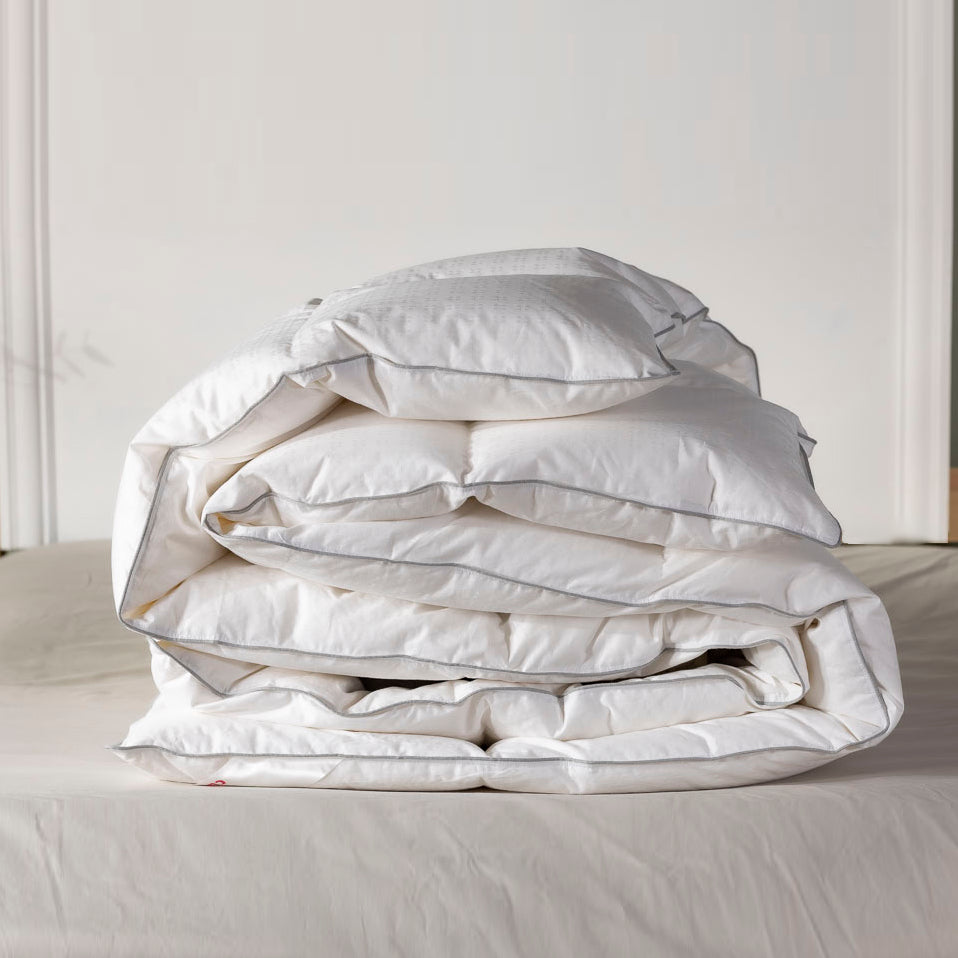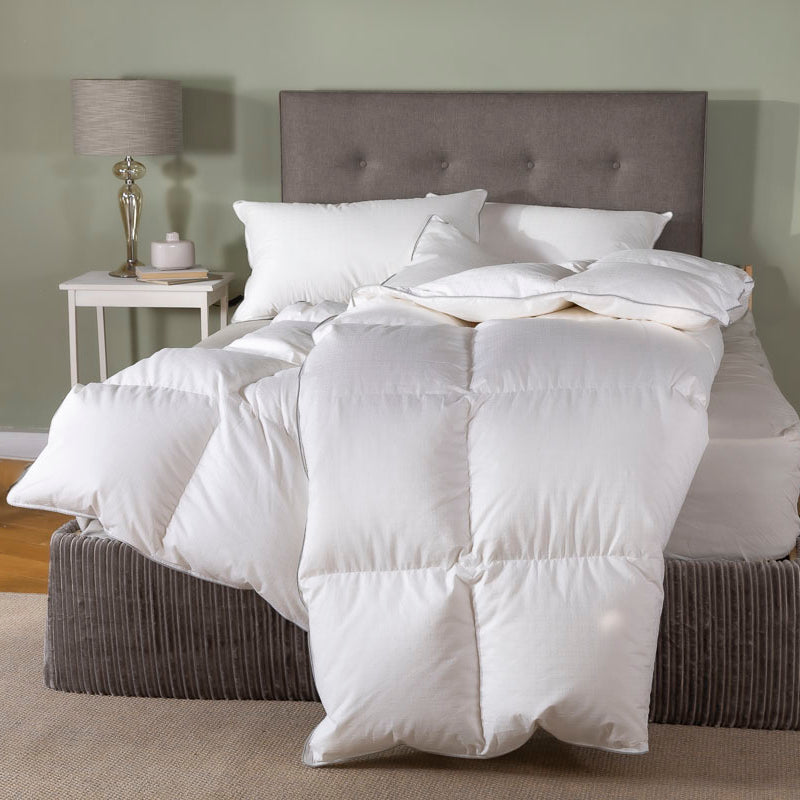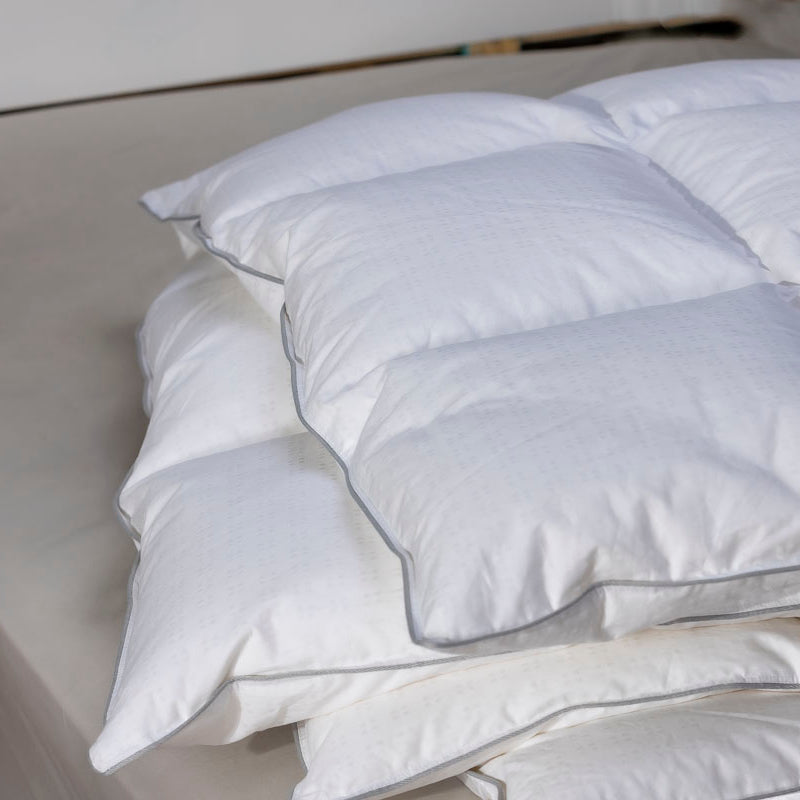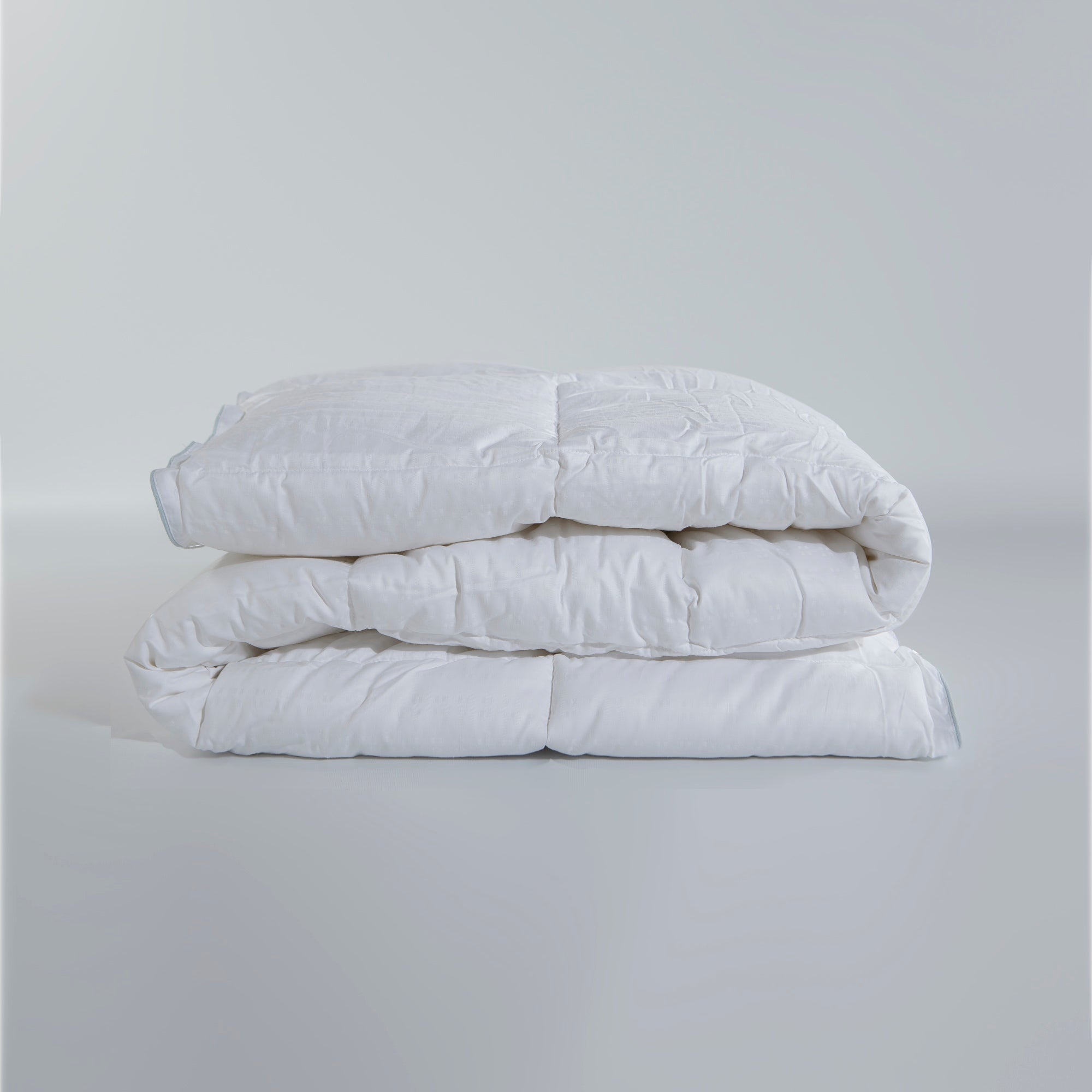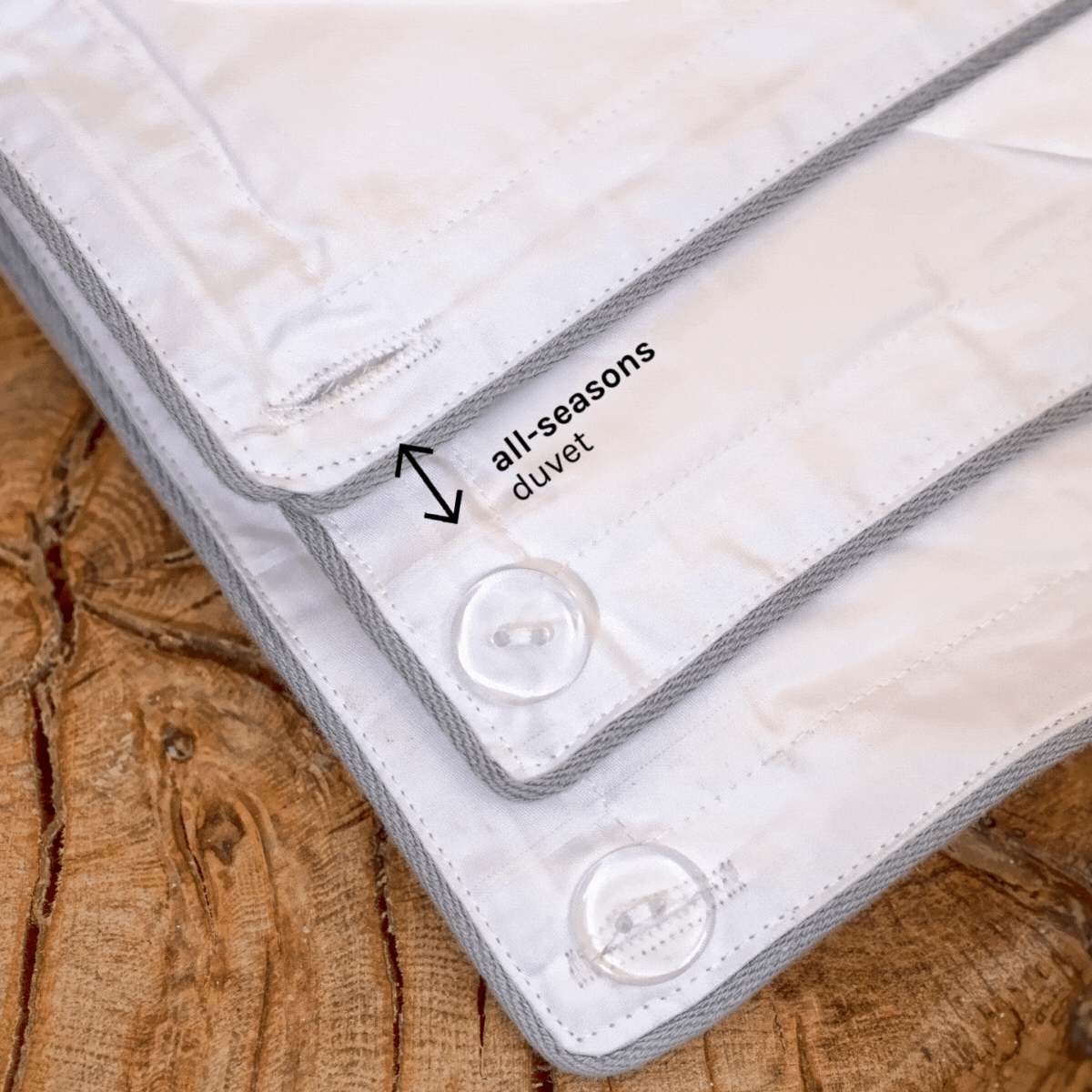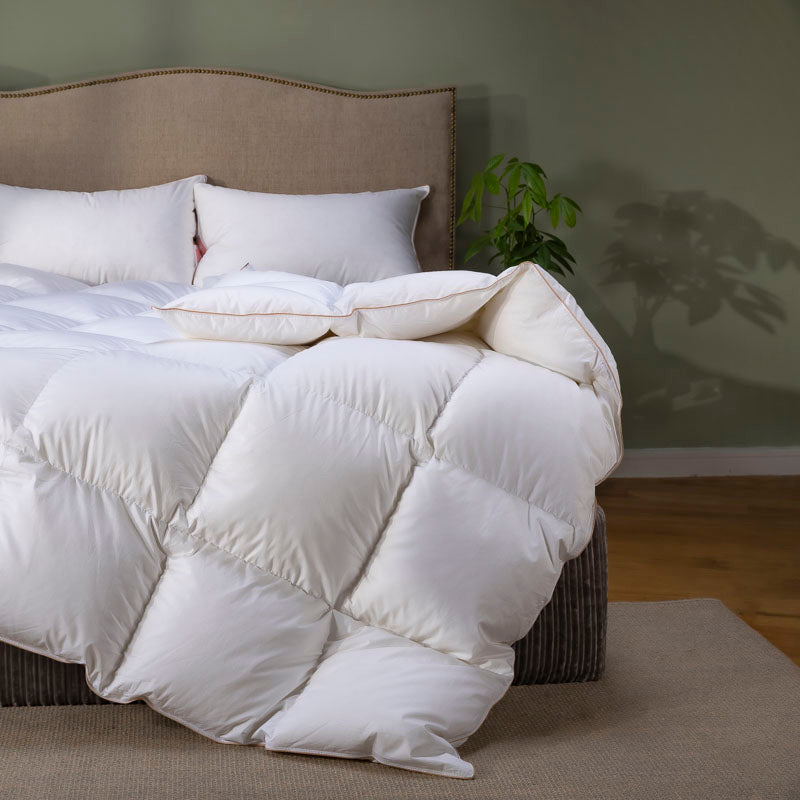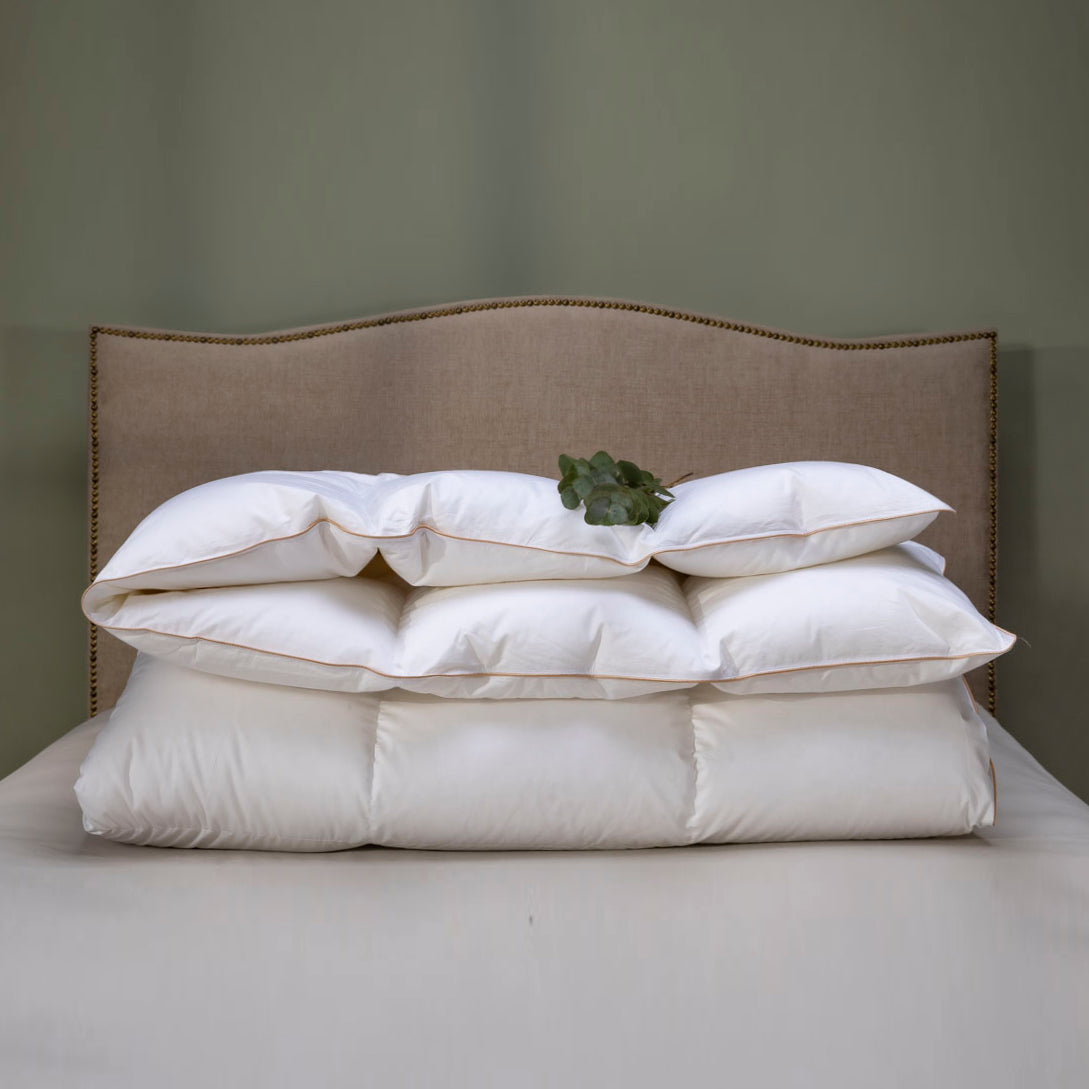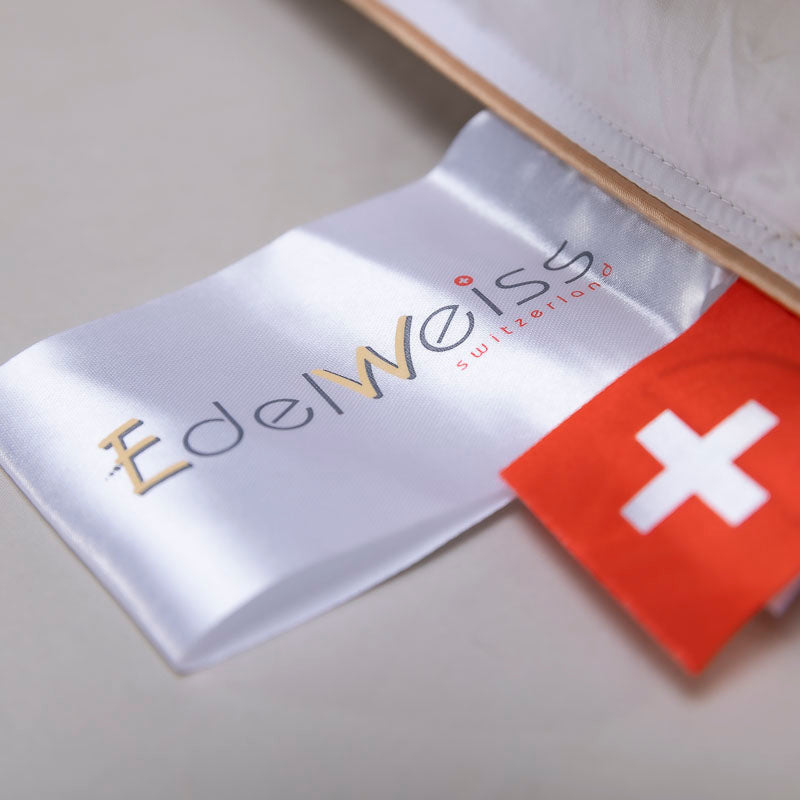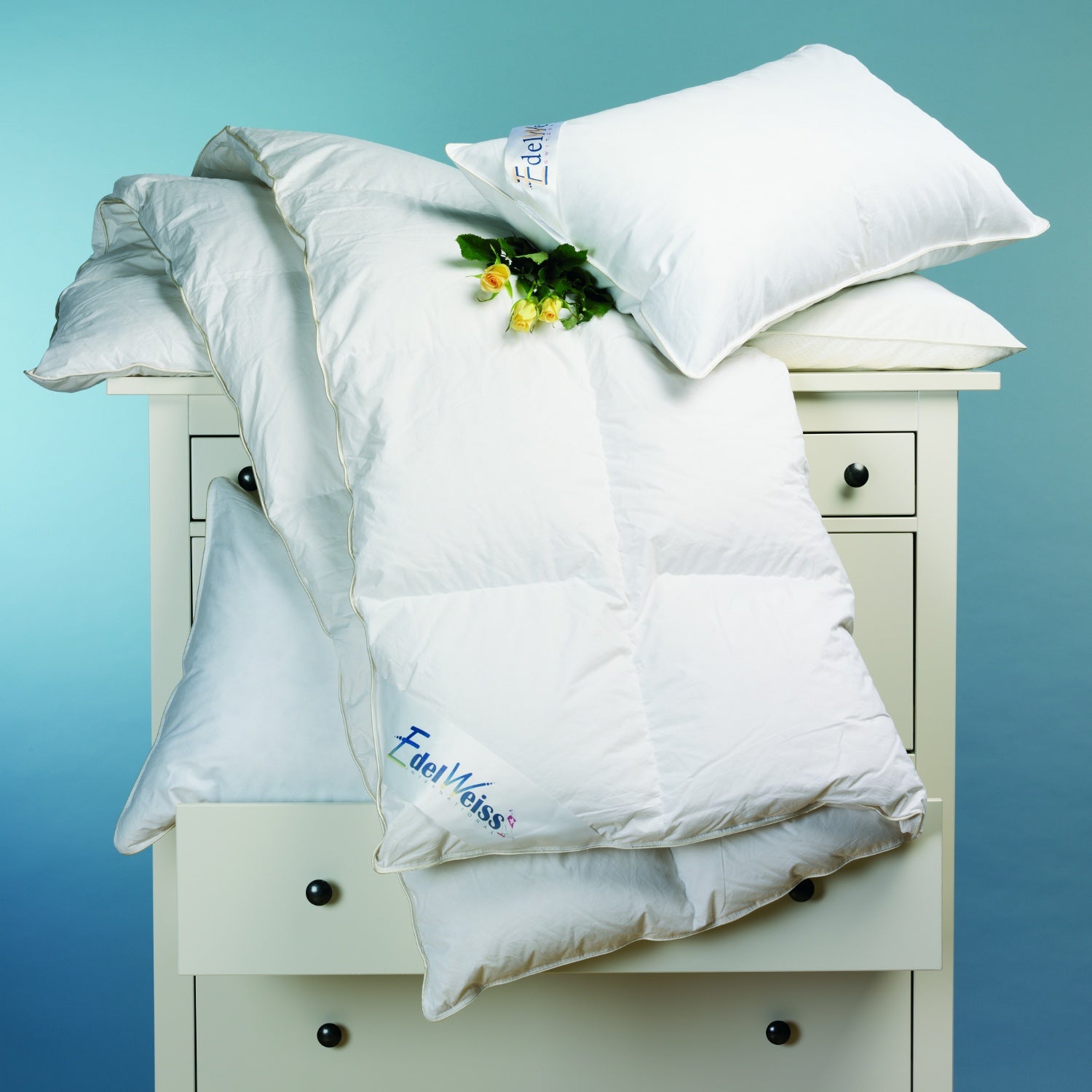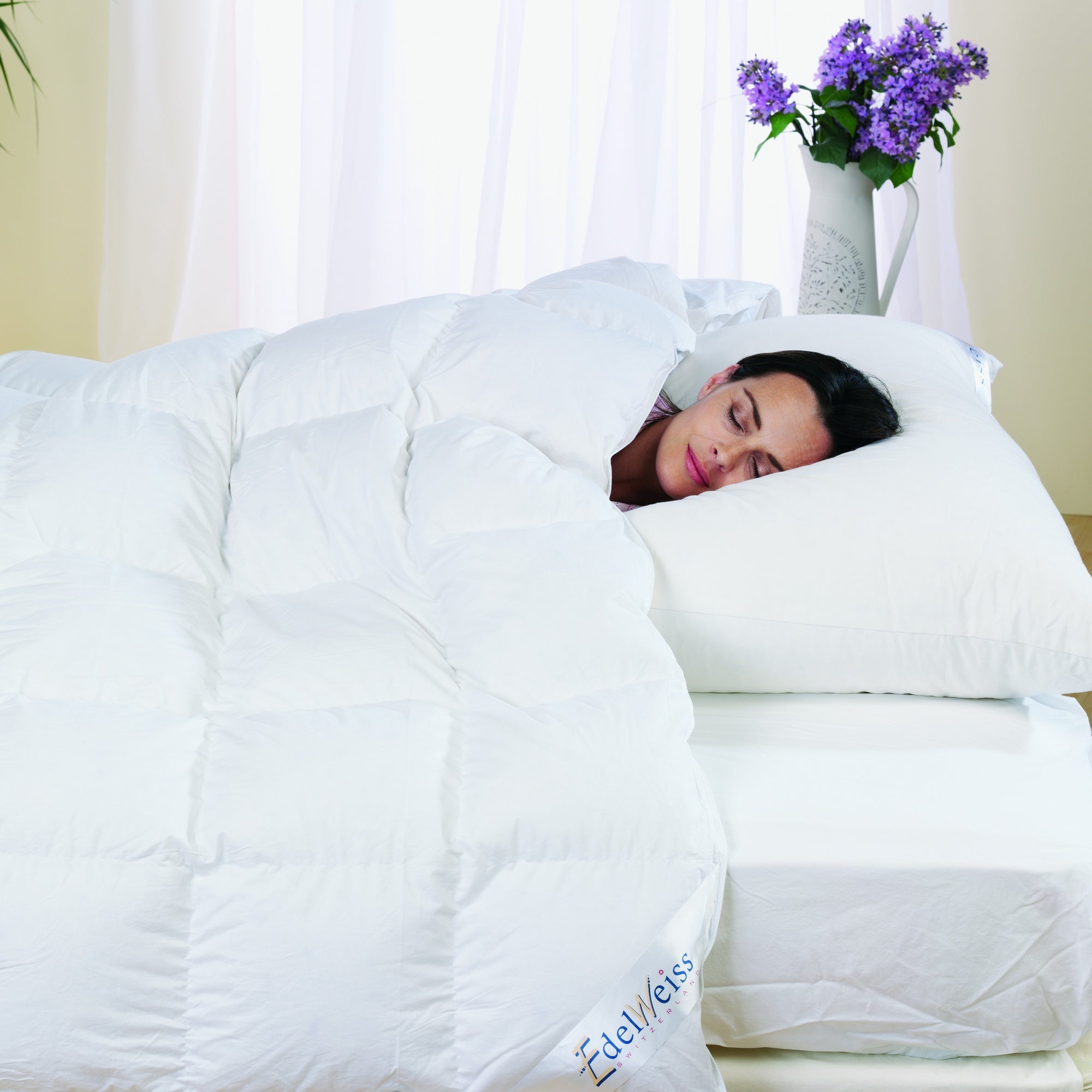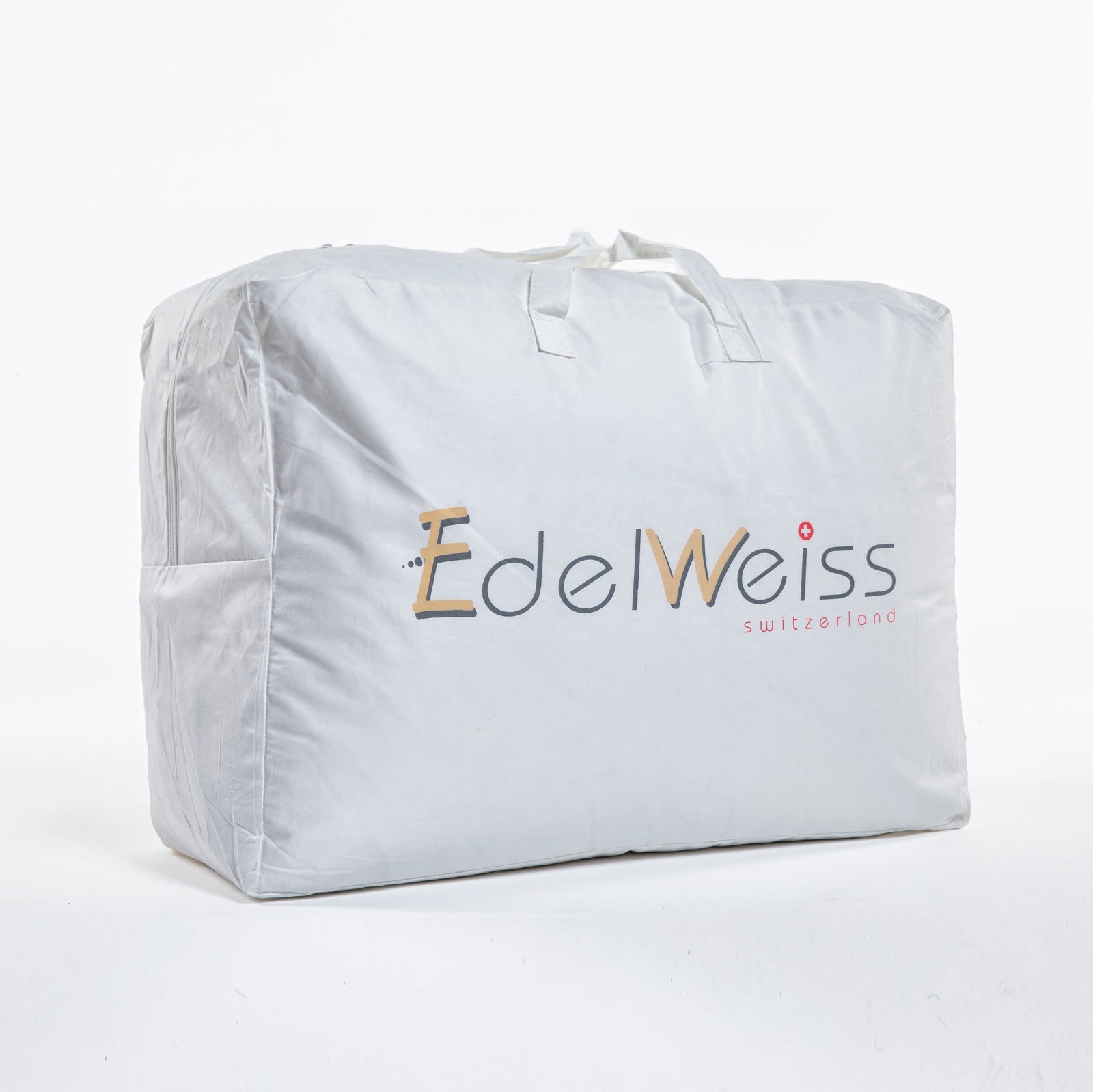When choosing a comforter your mind will likely wander first to thoughts of materials, colors, how heavy you want the covers to feel, and eventually, how warm you want your new duvet to be. But it’s that last consideration – how warm do you want to be under this nest of covers – that can send you down a rabbit hole of comparisons and decision making.
And it’s just for that reason we’re going to talk about one of the most important terms in the duvet world: tog ratings as well as four other things that can affect the warmth of your bedding.
What is a tog rating?
Tog (without going too deeply into the science of it) is a measurement of thermal resistance within a unit or designated area. In the world of bedding, tog ratings create structure by providing a clear, measurable indicator of how warm you can expect a duvet to be (but it’s not the only thing that matters, which we’ll explain shortly).
When it comes to bedding, the tog ratings are calculated with the assumption that the person using the duvet is nude, and no additional blankets or covers are being used. It’s purely a measure of approximately how warm that single item can keep your unclothed body.
While it might seem like an extra step to those who have the magic touch and can find the perfect duvet with ease (especially when shopping for bedding in person), they serve a very important purpose. Thanks to tog ratings you can navigate through seemingly comparable duvets online or by catalog and began to understand why one might be priced differently or look bulkier than another and how warm it will keep you.
Understanding Tog Ratings
The lower the tog rating, the less warmth a duvet is expected to capture and vice versa. The rating scale here in the UK starts at a low of 1.5 tog and goes as high as 16.5 tog. Summer duvets are typically rated between 1.5 and 4.5 tog while spring & autumn fall between 7.5 and 10.5 tog and winter duvets are rated at 12 tog or higher. But as mentioned earlier, tog rating is not the only indicator of how warm a duvet will actually be.
What else can affect how warm you feel under your duvet?
The Material
Duvets with the same tog rating can provide vastly different real-world warmth and feel depending on the filling. Real goose down, for example, feels heavier and warmer than its synthetic counterpart because it offers a different level of breathability and thus insulation. Often a goose down blanket can be physically less bulky than a synthetic version because less filler is required for the same effect.
Adding a Duvet Cover
Whether or not you choose to cover your comforter or not will also affect the warmth. A lightweight summer duvet can easily be made warm enough for spring if you add a thick cover whereas a heavier duvet provides more warmth and weight without the need for accessories.
The Thread Count of Your Sheets
Just as with the material inside a duvet, the material outside it can make a difference as well. Sheets with higher thread counts are prized for their soft, luxurious feel, but they don’t breathe as well as those with lower thread counts which can lead to feeling too warm and even sweating.
The Type of Mattress You Have
Mattresses come in all shapes, sizes, and construction. Because of the variety of styles and sleepers, it’s important to consider what your bed is made of. Some beds are made of less breathable material – like foam – and will naturally trap more of your body heat than a classic spring or pillowtop mattress. You’ll want to make sure you choose a duvet that complements the type of bed you have as well as your choice of bedding to make sure you don’t end up either too warm or too cool.
Ready to find your perfect duvet? Explore our range of bedding designed to keep you warm and cosy year round. With different tog ratings and materials you can find the one that’s just right for you.

